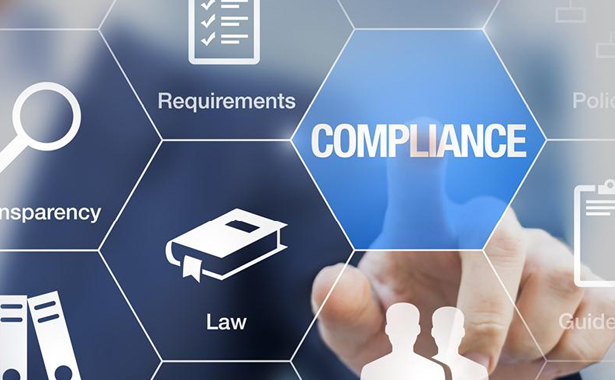Introduction
As a lawyer, you know that your profession requires a high degree of compliance management. You also know that keeping up with the latest laws and regulations can be a difficult task, even for the most experienced lawyers. Compliance management is an important part of any law firm’s operations, but too many firms fail to adequately address it. In this article, we’ll explore what compliance management is and why it’s so crucial for law firms, and then we’ll offer some tips on how you can implement effective compliance policies at your own practice.
What is Compliance Management?
Compliance management is the process of ensuring that your firm meets legal requirements. It’s not just about avoiding fines, but also about making sure you’re doing everything possible to protect yourself from liability.
The goal of compliance management is to ensure that your firm is in compliance with the law and has sufficient internal controls in place to prevent non-compliance from occurring. It’s an ongoing process rather than a one-time event: you need to constantly monitor how effective your policies are at preventing non-compliant behavior (or if they need updating), as well as make sure employees understand what they need to do differently if they find themselves in violation of company policy or law.
Why Should Law Firms Invest in Compliance Management?
Compliance management is essential for the success of law firms. Compliance issues can be complex and expensive to fix, leading to lawsuits, fines and damaged reputations. This is why it’s important that you invest in compliance management such as: CAPP Compliance or Eloomi now before your firm gets hit with any consequences.
What is the Difference Between Compliance Management and Other Forms of Governance?
While compliance management and governance are similar, they’re also different. Governance is a process for creating policies and procedures to ensure that your company is following the law. It’s about managing risk and ensuring that you comply with the law. Compliance management is a consistently ongoing process that ensures you’re actually following your own rules!
So what does this mean? Essentially, if you want to be sure that everything goes smoothly in your organization (and avoid any legal trouble), then it’s important to both create good governance structures as well as make sure those structures are being used properly on a day-to-day basis.
How Can You Make Sure That Your Firm’s Compliance Policies are Effective?
The best way to assess your firm’s compliance is to ensure that you have a compliance management system in place, and make sure it works properly by testing it regularly (e.g., quarterly).
You can also use legal CRM software that helps you in observation and Staff Management even over long distances at affordable prices.
How to Create a Functioning Compliance Management System
Compliance management refers specifically to this latter aspect–the processes by which an organization ensures its compliance with applicable laws and regulations. In law firms, this includes managing risk by complying with Ethical Standards; maintaining confidentiality; conducting due diligence (credit checks) on clients before accepting them as clients; performing background checks on employees; implementing robust anti-money laundering (AML)/ Know Your Customer (KYC) programs; keeping accurate financial records (including billing), etc…
Read more: The Importance of Client Credit Checks in Lawyer-Client Relationships
Develop a Compliance Management Strategy
The first step in developing a compliance management strategy is to define the problem. To do this, you need to ask yourself: what are you trying to accomplish? This can be as simple as “I want my firm’s data security practices to be better,” or it could be more specific, like “We want our staff members’ personal information protected from hackers.”
Once you’ve defined your goal(s), it’s time to set them in motion by creating actionable steps that will help bring these goals into reality. One common pitfall is focusing too much on other people’s goals–it may seem like everyone is working toward the same thing, but that doesn’t mean they share your vision or understand how far they need to go to get there. Instead of worrying about what other people are working on and why they’re doing it differently than what works best for your organization, focus instead on achieving tangible results within 3-6 months (or whatever amount of time makes sense for your business).
Determine What Needs to Be Complied With
This can be done by looking at the relevant laws and regulations, as well as industry standards. You should also consider how your firm is structured (e.g., if it’s an LLC or PLLC), its size, its business model and any other factors that may influence its legal obligations.
Conduct a Legal Risk Assessment
Conducting a legal risk assessment is an important step in implementing a compliance management program. In order to conduct an effective legal risk assessment, you will need to identify all of the potential risks that are present within your firm. The following are examples of some common legal risks:
- Data Breach – When confidential information is lost or stolen from an organization by hackers or other third parties
- Privacy Violations – When personal information about customers or employees is improperly shared with others outside of your organization’s control
- Legal Malpractice – Legal Malpractice means negligence of legal duty, or breach of contract by a lawyer during the provision of legal services that can cause harm to a client.
Evaluate Your Current Compliance Efforts
Before you can begin to improve your compliance efforts, you need to evaluate the current state of affairs. This means taking a look at the steps that are currently in place and determining if they’re followed and whether they’re effective or not.
Evaluating your existing compliance efforts is also important because it allows you to determine what areas could use improvement–and how much effort is needed for those improvements. This is where many law firms fall short: They don’t have clear goals or plans for improving their compliance programs; instead, they simply try different things until something sticks.
The Vitality of Compliance Management
In today’s world of compliance, it can be the difference between success and failure. For example, let’s say you work at a law firm that handles cases for clients who have been injured in car accidents. You have a client who has been hurt in an accident and is looking for compensation from the driver who caused the crash. If your firm does not comply with all state laws regarding personal injury cases like this one, then it could face fines or other penalties from regulators such as the State Bar Association or even criminal charges from local prosecutors’ offices.
This same principle applies across industries: if you don’t follow certain regulations about how long employees should work each day/week/month; if workers are exposed to dangerous chemicals without proper training; if companies don’t provide adequate safety equipment such as hard hats or respirators when necessary…these are just some examples where noncompliance could lead directly back into courtrooms filled with angry plaintiffs seeking justice!
Conclusion
We hope this article has given you a better understanding of the importance of compliance management in law firms. Compliance issues can be complicated and often require expert knowledge to resolve, but they are important for every business–even those that aren’t legal.









